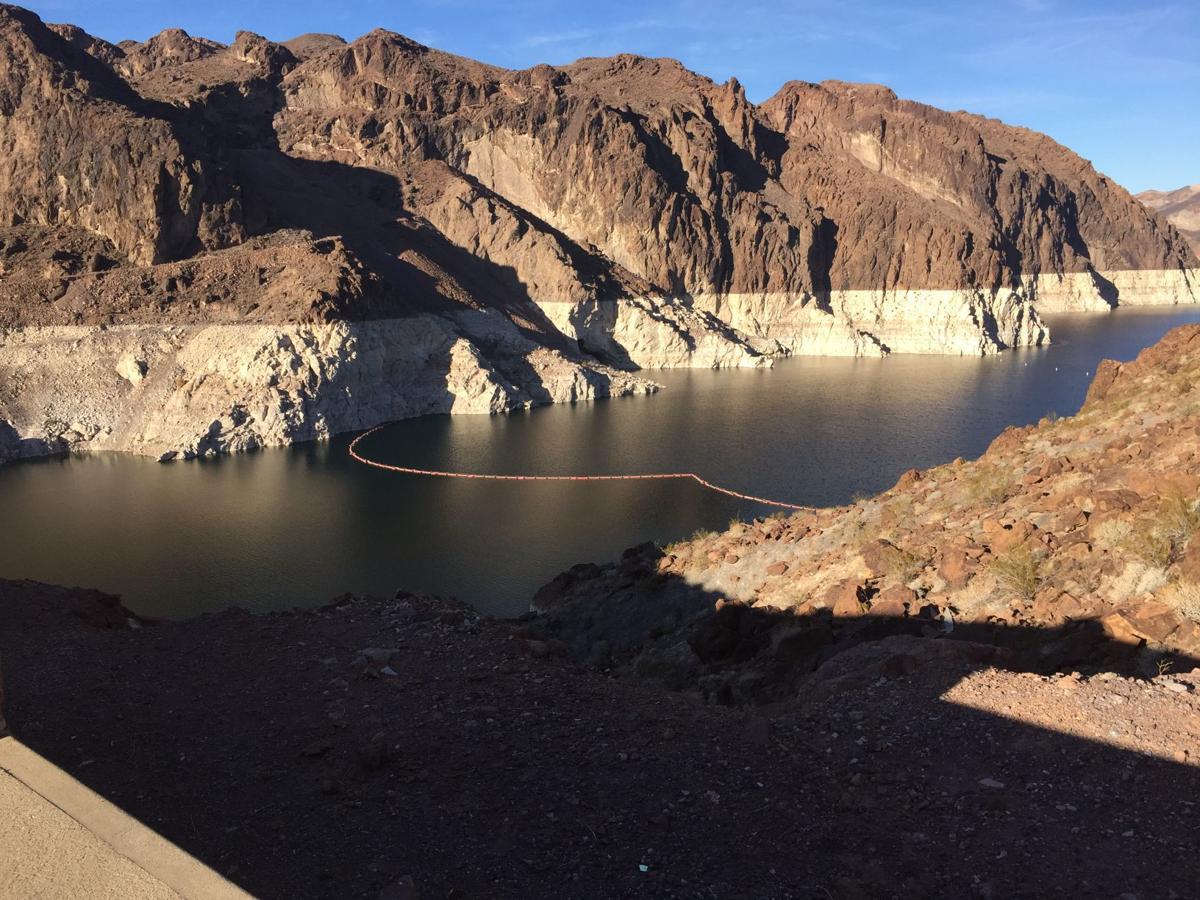A new study blames human-caused evaporation for water losses in the Colorado River Basin.
More water is lost across the seven-state basin to evaporation due to human factors such as irrigation during July — about 8.5 million acre-feet — than what flows downriver from Lake Powell to Lake Mead in an average year, says the study, from seven researchers in Southern California, Taiwan and China.
The 8.5 million acre-feet is more than five years worth of Central Arizona Project water for Tucson, Phoenix and neighboring cities and farms. An acre-foot covers a football field a foot deep.
During July, 38 percent of evaporation in the seven-state basin — which also includes big reservoirs such as Lake Powell and Lake Mead — is typically caused by human factors, the study says. Year-round, the human share is about 12 percent, the study says.
The study, covering 2003 to 2010, used satellite data and computer models to calculate the difference between natural and human causes of what’s called evapotranspiration — a combination of two forces.
Evaporation occurs from a water body such as a reservoir or river. Transpiration occurs when water irrigates a crop, is taken up into plants through its roots, and goes on small pores on the underside of leaves. There, it changes to vapor and is released.
damming is flash point
The 8.5 million acre-feet is “a pretty big number, for sure,” said Stephanie Castle, a water resource specialist in Irvine, California, who co-authored the study. “The middle of summer is when it’s hottest, when there’s the most evaporation off Mead and Powell, and when it’s more likely that irrigation is applied.”
Hopefully the study will start a conversation about how to minimize evapotranspiration losses, said another author, Jay Famiglietti, a senior scientist for NASA’s Joint Propulsion Laboratory in Pasadena.
“We lose a lot of water from reservoirs that were built at a time when we didn’t think evapotranspiration was as important as we do today. We can’t fix the problem if we don’t start putting numbers out for comparison,” Famiglietti said.
Evaporation from reservoirs has long been a flash point for environmentalists who decry the damming of rivers and its resulting environmental degradation to store water for people.
Just last Friday, the nonprofit investigative website ProPublica wrote a story questioning whether Glen Canyon Dam should be decommissioned and its water storage function transferred to Lake Mead to save water from evaporation and seepage through Lake Powell’s porous sandstone rocks.
“In what is perhaps the most egregious failure for a system intended to conserve water, many (reservoirs) lose hundreds of billions of gallons of precious water each year to evaporation and, sometimes, to leakage underground,” ProPublica said. “These losses increasingly undercut the longstanding benefits of damming big rivers like the Colorado, and may now be making the West’s water crisis worse.”
some are not overly concerned
The idea of decommissioning Glen Canyon Dam has not gone anywhere before, and there’s little immediate prospect of it happening.
As long as reservoirs exist, it’s unlikely much can be done to reduce their evaporation because they’re too big, Famiglietti said. But irrigation water loss “is a bit easier problem to tackle,” said Famiglietti, who earned a master’s degree in hydrology from the University of Arizona in 1986.
“Using less water and being more efficient with irrigated agriculture can certainly help,” he said, particularly drip irrigation lines that can be covered by topsoil.
The U.S. Bureau of Reclamation, which operates the Colorado’s reservoirs, declined detailed comment on the study, as did the Central Arizona Project.
“It’s interesting information to add to the studies that exist already regarding the Colorado River,” said bureau spokeswoman Rose Davis. “We appreciate the interest in the Colorado River.”
Losing water to evaporation “is the price we pay for having four years worth of water stored in the reservoirs,” added CAP spokesman Mitch Basefsky.
The Arizona Farm Bureau, a farmers’ educational and advocacy group, agreed that the study touches on a valid concern that desert states with low humidity and high temperatures have high evapotranspiration rates. But Arizona farmers using flood irrigation have modified practices to reduce water use and evapotranspiration, said Julie Murphree, a Farm Bureau spokeswoman.
“Unfortunately, such a study does not take into account all the things the farmers are doing to reduce water use,” Murphree said.
UA hydrologist Thomas Meixner and Oregon State University hydrologist Michael Campana generally praised the study, in part because it shows the importance of using satellite data to measure evaporation. Evaportranspiration is probably the most difficult form of water behavior to measure, since you can’t see it, said Campana, who earned a master’s degree and a doctorate at the UA in the 1970s.
While the discovery of large-scale evapotranspiration may not be shocking, it’s important that the researchers were able to measure it, Meixner said. If you do wholesale changes to landscapes, he said, you need to know: “How does that affect the climate?”





